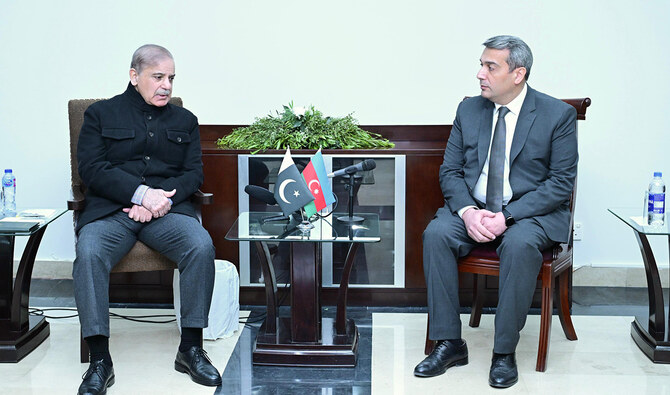KARACHI: Pakistan’s national currency on Tuesday hit a record low of Rs288.99 against the United States amid deepening political uncertainty and the government’s inability to secure a staff level agreement from the International Monetary Fund for a bailout deal, currency dealers said.
The IMF funding is critical for Pakistan to unlock other external financing avenues, and the two have been negotiating since early February to resume $1.1 billion in funding held since November, part of a $6.5 billion bailout agreed in 2019. One of the lender’s last remaining conditions for release of the tranche is securing an assurance on external financing to fund Pakistan’s balance of payments.
The only help so far has come from longtime ally Beijing, through a refinancing of $1.8 billion already credited to Pakistan’s central bank.
The Pakistani rupee has slumped by 1.8 percent since March 31, 2023 to Rs288.99 for selling in the interbank market during trading on Tuesday. In the open market the currency was trading at Rs291 against the previous day’s Rs287 against the dollar, according to currency dealers.
Dealers said a delay in securing the IMF deal and political turmoil in Pakistan, particularly with regards to former Prime Minister Imran Khan’s ongoing tussle with the federal government over elections and the latter’s standoff with the higher judiciary, were key stimulators pushing the rupee to new lows.
“There is nervousness in the market as the country seems still away from sealing the deal with the IMF and the current political and judicial crisis are contributing to the current rupee depreciation,” Zafar Sultan Paracha, general secretary of the Exchange Companies Association of Pakistan (ECAP), told Arab News.
“The market needs some good news and there is none at the moment from any front, be it IMF or the political front.”
Paracha said the Asian Development Bank’s (ADB) latest forecast slowing Pakistan’s growth rate during the current fiscal year to 0.6 percent from 6 percent in the last fiscal year had also exerted pressure on the Pakistani rupee. Growth is forecast to rise to 2 percent in FY2024, assuming the resumption of macroeconomic stability, implementation of reforms, post-flood recovery, and improving external conditions.
The Asian lender said growth was slowing in the wake of last year’s devastating floods, ballooning inflation, a current account deficit, and an ongoing foreign exchange crisis.
“Pakistan’s economy continues to face strong headwinds while last year’s catastrophic floods have exacerbated the economic and financial challenges,” ADB Country Director for Pakistan Yong Ye said in a statement issued on Tuesday.
“Yet, with a history of resilience in the face of adversity and depending on a fast return to stability twinned with robust macroeconomic and structural reforms, Pakistan can bounce back. ADB is committed to continuing to support Pakistan’s economic recovery and development plans.”
According to ADB’s Asian Development Outlook for April 2023, Pakistan’s average inflation is projected to more than double from 12.2 percent in FY2022 to 27.5 percent this fiscal year.
Headline consumer inflation jumped to 25.4 percent in the first seven months of the fiscal year on higher domestic energy prices, a weaker currency, flood-related disruptions to supply, and restraint on imports caused by the balance of payment crisis.
As a net importer of oil and gas, Pakistan will also continue experiencing strong inflationary pressures for the rest of FY2023, ADB said.

















